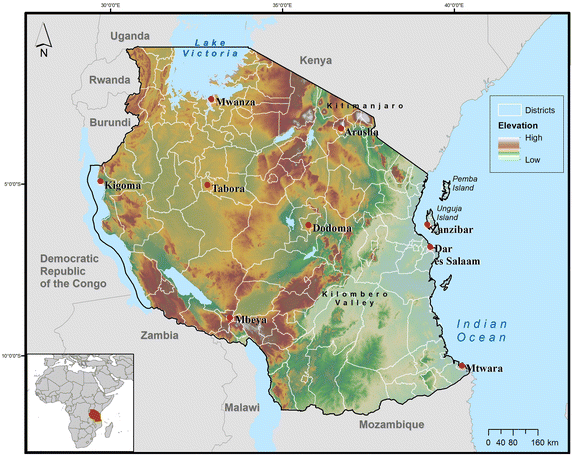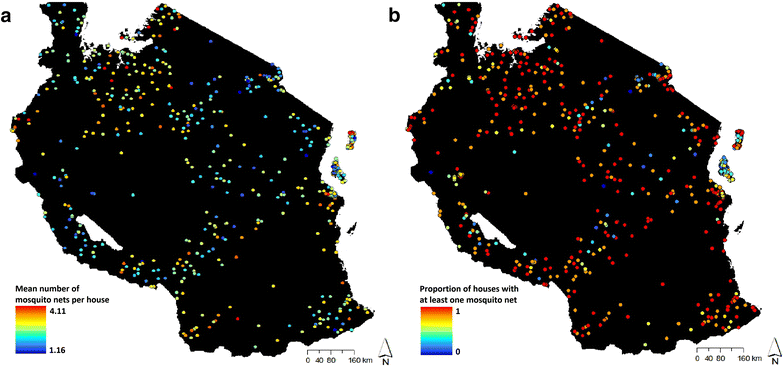Where have all the mosquito nets gone? Spatial modelling reveals mosquito net distributions across Tanzania do not target optimal Anopheles mosquito habitats
- PMID: 26283538
- PMCID: PMC4539722
- DOI: 10.1186/s12936-015-0841-x
Where have all the mosquito nets gone? Spatial modelling reveals mosquito net distributions across Tanzania do not target optimal Anopheles mosquito habitats
Abstract
Background: Malaria remains the deadliest vector-borne disease despite long-term, costly control efforts. The United Republic of Tanzania has implemented countrywide anti-malarial interventions over more than a decade, including national insecticide-treated net (ITN) rollouts and subsequent monitoring. While previous analyses have compared spatial variation in malaria endemicity with ITN distributions, no study has yet compared Anopheles habitat suitability to determine proper allocation of ITNs. This study assesses where mosquitoes were most likely to thrive before implementation of large-scale ITN interventions in Tanzania and determine if ITN distributions successfully targeted those areas.
Methods: Using Maxent, a species distribution model was constructed relating anopheline mosquito occurrences for 1999-2003 to high resolution environmental observations. A 2011-2012 layer of mosquito net ownership was created using georeferenced data across Tanzania from the Demographic and Health Surveys. The baseline mosquito habitat suitability was compared to subsequent ITN ownership using (1) the average ITN numbers per house and (2) the proportion of households with ≥1 net to test whether national ITN ownership targets have been met and have tracked malaria risk.
Results: Elevation, land cover, and human population distribution outperformed variants of temperature and Normalized Difference Vegetation Index (NDVI) in anopheline distribution models. The spatial distribution of ITN ownership across Tanzania was near-random spatially (Moran's I = 0.07). Householders reported owning 2.488 ITNs on average and 93.41 % of households had ≥1 ITN. Mosquito habitat suitability was statistically unrelated to reported ITN ownership and very weakly to the proportion of households with ≥1 ITN (R(2) = 0.051). Proportional ITN ownership/household varied relative to mosquito habitat suitability (Levene's test F = 3.0037). Quantile regression was used to assess trends in ITN ownership among households with the highest and lowest 10 % of ITN ownership. ITN ownership declined significantly toward areas with the highest vector habitat suitability among households with lowest ITN ownership (t = -3.38). In areas with lowest habitat suitability, ITN ownership was consistently higher.
Conclusions: Insecticide-treated net ownership is critical for malaria control. While Tanzania-wide efforts to distribute ITNs has reduced malaria impacts, gaps and variance in ITN ownership are unexpectedly large in areas where malaria risk is highest. Supplemental ITN distributions targeting prime Anopheles habitats are likely to have disproportionate human health benefits.
Figures







References
-
- WHO . World Malaria Report 2014. Geneva: World Health Organization; 2014.
Publication types
MeSH terms
LinkOut - more resources
Full Text Sources
Other Literature Sources
Miscellaneous

